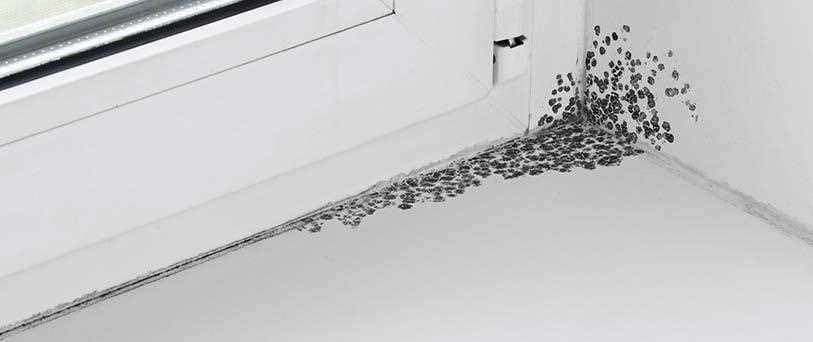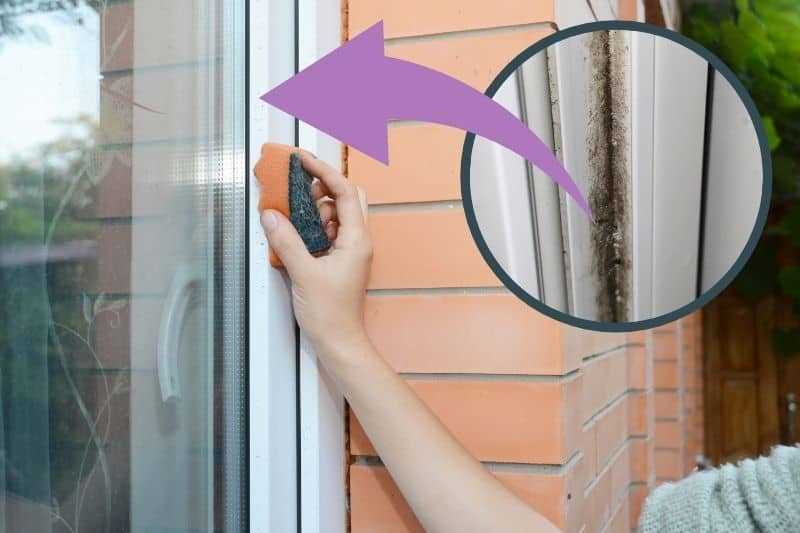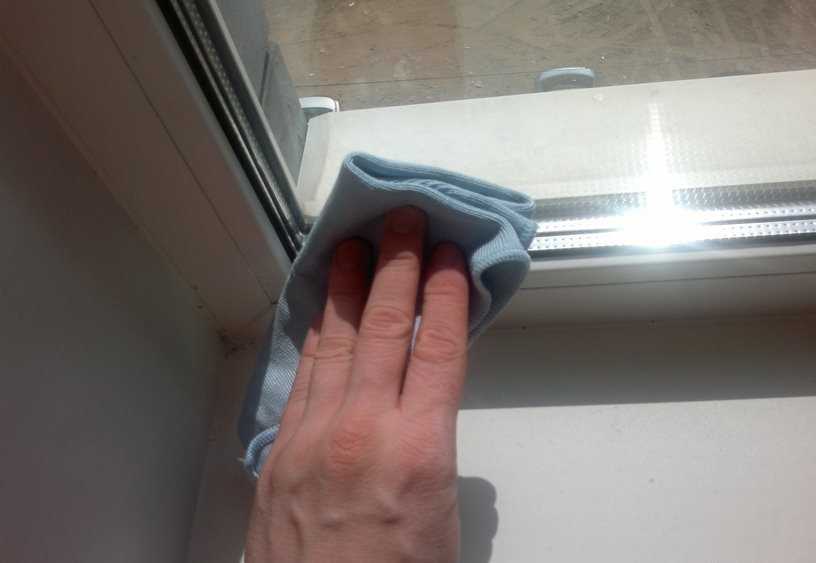




Mould is a common problem that many homeowners face, especially in areas with high humidity or poor ventilation. When it comes to uPVC window frames, mould can not only be unsightly, but it can also cause damage to the window frame itself. However, removing mould from uPVC window frames can be a relatively simple process if done correctly.
First, it is important to identify the cause of the mould growth. Mould thrives in damp and humid conditions, so if your uPVC window frames are constantly exposed to moisture, such as condensation, rainwater, or leaking pipes, then you may need to address these issues first to prevent future mould growth.
Once the cause has been addressed, the next step is to clean the mould from the uPVC window frames. It is recommended to use a mixture of bleach and water in a spray bottle to effectively kill and remove the mould. Be sure to wear protective clothing, such as gloves and a mask, to avoid any contact with the mould or the cleaning solution.
Apply the bleach and water mixture onto the affected areas of the uPVC window frames and let it sit for a few minutes to allow the solution to penetrate the mould. You can then use a nylon brush or sponge to scrub away the mould gently. In areas where the mould is deeply embedded or difficult to reach, you can use a toothbrush or cotton swab to target those specific areas.
Remember to thoroughly rinse the uPVC window frames with clean water after cleaning to remove any residual bleach or mould. This will help to avoid any damage to the window frames and ensure that they are clean and mould-free.
In conclusion, removing mould from uPVC window frames is a relatively straightforward process when done correctly. By identifying the cause of the mould growth, addressing any underlying issues, and using a bleach and water mixture to clean the affected areas, you can effectively remove mould and prevent it from recurring. Regular maintenance and proper ventilation will also help to keep your uPVC window frames mould-free in the long run.
Importance of Removing Mould from uPVC Window Frames
Mould is a common problem that can occur on uPVC window frames. It is not just an aesthetic issue, but it can also cause serious health problems and damage to your property if left untreated. Therefore, it is important to remove mould from uPVC window frames as soon as it is noticed.
Health Risks
Mould can release spores into the air that can be inhaled, leading to respiratory problems and allergies. These spores can cause symptoms such as coughing, sneezing, wheezing, and even asthma attacks. Additionally, mould can produce mycotoxins, which are toxic substances that can further exacerbate health problems. By removing mould from uPVC window frames, you can ensure a healthier living environment for you and your family.
Property Damage
Mould growth on uPVC window frames can cause damage to the frames themselves, as well as to the surrounding walls and ceilings. The moisture from the mould can seep into the material, causing it to weaken and deteriorate over time. This can lead to costly repairs or even the need for replacement of the window frames. By removing mould promptly, you can prevent further damage to your property and maintain its value.
Prevention of Spread
If mould is left untreated on uPVC window frames, it can spread to other areas of your home. Mould spores can easily travel through the air and settle on different surfaces, creating new growth areas. This can result in a much larger mould problem that is more difficult and costly to solve. By removing mould from uPVC window frames, you can prevent its spread and avoid a larger remediation job in the future.
Improved Aesthetics
Mould on uPVC window frames can be unsightly and give your home an unkempt appearance. Cleaning and removing the mould can help restore the appearance of your window frames and make them look fresh and well-maintained. This can enhance the overall aesthetics of your home and create a more inviting atmosphere.
In conclusion, removing mould from uPVC window frames is important for several reasons. It helps protect your health, prevents property damage, stops the spread of mould, and improves the appearance of your home. Regular maintenance and cleaning can help prevent mould growth in the first place, but if it does occur, prompt action is necessary to ensure a safe and healthy living environment.
Significance of Regular Cleaning

Regular cleaning of uPVC window frames is crucial for several reasons. Here are some of the key benefits of maintaining a regular cleaning routine:
1. Prevents the Growth of Mould
Mould thrives in damp and dirty environments, and uPVC window frames are no exception. Regular cleaning helps remove any traces of moisture, dirt, or debris that can contribute to mould growth. By keeping the frames clean, you can significantly reduce the risk of mould infestation.
2. Preserves the Aesthetic Appeal
Dirty and mouldy uPVC window frames can significantly affect the overall appearance of your home or office. Regular cleaning helps maintain the aesthetic appeal of the frames, keeping them looking fresh and clean. This is particularly important if you want to create a positive impression for visitors or potential buyers.
3. Extends the Lifespan of uPVC Frames
Regular cleaning helps prolong the lifespan of uPVC window frames. When left uncleaned, dirt and debris can accumulate on the surface, leading to damage over time. Regular cleaning allows you to remove these substances, preventing any potential harm and extending the longevity of the frames.
4. Improves Energy Efficiency

Well-maintained uPVC window frames contribute to better energy efficiency. When frames are clean, they can create a tighter seal when closed, preventing air leakage and reducing heat loss. This can ultimately result in lower energy bills and a more comfortable indoor environment.
5. Enhances Indoor Air Quality
Dirty uPVC window frames can harbor pollutants, dust, and allergens, which can degrade indoor air quality. Regular cleaning helps remove these contaminants, promoting a healthier living or working environment. Clean window frames contribute to cleaner air and can reduce the risk of respiratory issues.
6. Reduces Maintenance and Repair Costs
By regularly cleaning your uPVC window frames, you can minimize the need for costly repairs and maintenance. Removing dirt, debris, and mould in the early stages can prevent any potential damage that may require professional intervention. This can save you both time and money in the long run.
Conclusion
Maintaining a regular cleaning routine for uPVC window frames is vital for preserving their appearance, functionality, and longevity. By preventing mould growth, improving energy efficiency, enhancing indoor air quality, and reducing maintenance costs, regular cleaning offers numerous benefits that should not be overlooked.
Identifying Mould Growth on uPVC Window Frames
Mould growth on uPVC window frames can be a common problem, especially in areas with high humidity or poor ventilation. It is important to identify mould growth early and take the necessary steps to remove it promptly. Here are some signs that indicate the presence of mould on uPVC window frames:
- Visible black or green spots: Mould typically appears as black or green spots on the surface of uPVC window frames. These spots may be small or large in size, and they can spread if left untreated.
- Musty odor: Mould growth often produces a musty and unpleasant smell. If you notice a persistent musty odor near your uPVC window frames, it could be a sign of mould infestation.
- Allergic reactions: Some individuals may experience allergic reactions, such as sneezing, coughing, or itchy eyes, when they are in close proximity to mould. If you notice these symptoms worsen when you are near your uPVC window frames, it may indicate the presence of mould.
- Dampness or condensation: Mould thrives in damp environments, so if you notice excessive moisture or condensation on or around your uPVC window frames, it could be a breeding ground for mould.
If you notice any of these signs, it is important to take action to remove the mould growth as soon as possible. Ignoring mould infestation can lead to further damage to your uPVC window frames and potentially impact your health.
Disclaimer: It is worth mentioning that the identification of mould growth should be done by a professional mould inspector or a qualified individual who is trained to identify mould species. This article is intended as a general guide and does not replace professional advice.
Visible Signs of Mould
Mould is a type of fungi that thrives in moist environments and can be found growing on various surfaces, including uPVC window frames. It can cause a range of health problems and aesthetic issues. Identifying the visible signs of mould is essential for effective removal and prevention of its growth. Here are some common signs that indicate the presence of mould on uPVC window frames:
- Discoloration: Mould growth often leads to visible patches of discolored areas on the uPVC window frames. These patches can range in color from black, green, or brown to yellow or white, depending on the type of mould present.
- Musty Odor: Mould growth is often accompanied by a distinct musty smell. If you detect a musty odor coming from your uPVC window frames, it may indicate the presence of mould.
- Peeling or Cracked Paint: Mould growth can cause paint to peel or crack on uPVC window frames. This is a common sign that moisture is trapped beneath the surface, providing an ideal environment for mould to grow.
- Visible Spores: In advanced stages of mould growth, you may notice clusters of tiny black or brown spots on the surface of uPVC window frames. These spots are mould spores and can spread easily if not addressed promptly.
- Deterioration of Materials: Prolonged exposure to mould can cause the materials of uPVC window frames to deteriorate. This can lead to structural damage and compromise the functionality of the windows.
If you notice any of these visible signs of mould on your uPVC window frames, it is essential to take immediate action to remove the mould and address the underlying moisture issue to prevent further growth.
Preparing for Mould Removal
Before you begin the process of removing mould from uPVC window frames, it’s important to adequately prepare the area and gather the necessary supplies. This will help ensure a thorough and effective removal process.
Gather the necessary supplies
- Protective clothing: Wear gloves, a mask, and eye goggles to protect yourself from the mould spores and cleaning products.
- Cleaning solution: Prepare a solution of warm water and mild detergent or anti-mould cleaner.
- Scrub brush or sponge: Use a soft-bristle brush or sponge to scrub away the mould from the window frames.
- Old towels or rags: Have some old towels or rags on hand to absorb any excess moisture during the cleaning process.
- Vinegar or bleach: Depending on the severity of the mould growth, you may also need either vinegar or bleach as additional cleaning agents.
- Plastic sheeting: If the mould growth is extensive, it may be necessary to cover nearby surfaces with plastic sheeting to protect them from the cleaning solution.
Prepare the area
Mould removal can be a messy process, so it’s important to take the necessary precautions to protect yourself and your surroundings.
- Open windows: Ensure the area is well-ventilated by opening windows and doors to allow fresh air to circulate during the cleaning process.
- Isolate the area: If possible, isolate the affected area by closing doors and covering nearby furniture or objects to prevent the spread of mould spores.
- Protect flooring: Lay down plastic sheeting or old towels on the floor beneath the window frames to catch any drips or spills during the cleaning process.
- Turn off heating or cooling systems: To prevent the spread of mould spores, turn off any heating or cooling systems in the vicinity of the mouldy window frames.
By properly preparing for mould removal, you’ll be able to efficiently and effectively eliminate the mould from your uPVC window frames.
Gathering Necessary Tools and Materials
Before starting the process of removing mould from uPVC window frames, it is important to gather all the necessary tools and materials. Having everything ready will ensure a smoother and more efficient cleaning process.
Tools:

- Protective gloves
- Dust mask
- Mould removal spray or solution
- Soft-bristled brush or sponge
- Microfiber cloth or paper towels
- Plastic scraper or old credit card
- Vacuum cleaner with brush attachment
Materials:
- Bucket or basin for mixing the cleaning solution
- Warm water
- Mild detergent or vinegar
- Bleach (optional)
Note: It is important to wear protective gloves and a dust mask during the cleaning process to avoid any potential skin irritation or respiratory issues.
Additionally, make sure to choose a mould removal spray or solution that is specifically designed for uPVC surfaces. This will ensure that the cleaning process is effective while also protecting the uPVC material.
The soft-bristled brush or sponge will be used to scrub away the mould from the window frames. Avoid using abrasive materials or harsh brushes as they can damage the uPVC surface.
The microfiber cloth or paper towels will be used to wipe away the excess moisture and residue after cleaning. These materials are gentle on the uPVC and will help to prevent streaks or scratches.
A plastic scraper or old credit card can be used to gently scrape away any stubborn mould that is difficult to remove with the brush or sponge.
A vacuum cleaner with a brush attachment can be used to remove any loose mould spores or debris from the window frames before the cleaning process begins. This will help to prevent the mould from spreading or becoming airborne.
Lastly, for preparing the cleaning solution, a bucket or basin will be needed to mix warm water with a mild detergent or vinegar. Optionally, bleach can be added to the mixture for added disinfection.
Methods for Removing Mould from uPVC Window Frames
Mould can be a common problem on uPVC window frames, especially in areas with high levels of moisture. If left untreated, mould can not only be unsightly but also pose health risks. Fortunately, there are several effective methods for removing mould from uPVC window frames.
1. Vinegar Solution

One of the most popular and effective methods for removing mould is using a vinegar solution. Simply mix equal parts of white vinegar and water in a spray bottle. Spray the solution onto the affected areas of the uPVC window frame and let it sit for a few minutes. Then, scrub the mould away using a soft brush or sponge. Rinse the area with clean water and dry it thoroughly.
2. Bleach Solution
A bleach solution can also be used to remove mould from uPVC window frames. Mix one part bleach with four parts water in a spray bottle. Make sure to wear gloves and protect your eyes when working with bleach. Spray the solution onto the mouldy areas and let it sit for about 10 minutes. Scrub the mould away with a brush or sponge and rinse the area with clean water. Ventilate the room well after using bleach.
3. Commercial Mould Removers

There are also commercial mould removers available in the market that are specifically designed to remove mould from uPVC window frames. These products usually come in spray or gel form and contain powerful ingredients to effectively eliminate mould. Follow the instructions on the packaging for proper application and safety precautions.
4. Preventive Measures
Preventing mould growth in the first place is the best way to keep uPVC window frames mould-free. Ensure proper ventilation in the room by opening windows regularly to allow air circulation. Keep the window frames clean and dry by wiping away any condensation or moisture. Use a dehumidifier in areas with high humidity to control moisture levels. Regularly inspect and maintain the seals and edges of the uPVC window frames to prevent water infiltration and mould growth.
By using these methods and taking preventive measures, you can effectively remove mould from uPVC window frames and keep them mould-free in the long run.
FAQ
What are the signs that my uPVC window frames have mould?
Signs that your uPVC window frames have mould include black or green spots, a musty smell, and visible condensation.
How does mould develop on uPVC window frames?
Mould develops on uPVC window frames when moisture is present, which creates a perfect breeding ground for mould spores to grow.
Can I remove mould from uPVC window frames myself?
Yes, you can remove mould from uPVC window frames yourself by using a mixture of water and bleach, or by using a commercial mould remover. Just make sure to take proper safety precautions and follow the product instructions.
Are there any natural methods for removing mould from uPVC window frames?
Yes, there are natural methods for removing mould from uPVC window frames. These methods include using vinegar, hydrogen peroxide, or baking soda mixed with water. However, the effectiveness of these natural methods may vary.
How often should I clean my uPVC window frames to prevent mould?
It is recommended to clean your uPVC window frames at least once every 3-4 months to prevent mould. However, if you notice any signs of mould or excessive moisture, it is best to clean them more frequently.
What should I do if the mould on my uPVC window frames keeps coming back?
If the mould on your uPVC window frames keeps coming back despite regular cleaning, it could be a sign of a larger problem such as a leak or excessive humidity. In this case, it is recommended to seek professional help to identify and fix the underlying issue.














